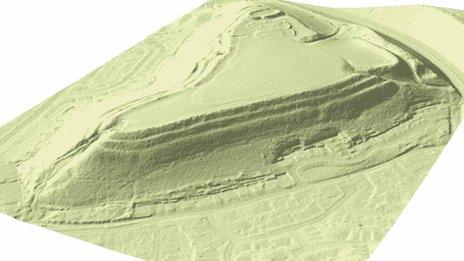Iron Age: How Wales was ruled from hillforts pre-Romans
- Published
Drones gathered video from above an archaeological dig at Caerfai, a promontory hillfort along the Pembrokeshire coast
Welsh leaders before the Roman invasion ruled from hillforts whose stone ruins still overlook every part of the country, an archaeologist has said.
Aberystwyth-based Toby Driver said there were "big stories" still to be told about Wales' 764 Iron Age hillforts.
One of the largest, Garn Goch, looms over Bethlehem in Carmarthenshire.
Villagers said they "respect" the sprawling monument, but know little about the people who built it.
"People get very excited about the pyramids of Egypt and monuments around the world," Mr Driver said.
"We should be getting excited about this incredible hillfort heritage we have in Wales."
His new book, Hillforts of Iron Age Wales, includes illustrations showing what these "vibrant hill top villages" would have looked like 2,500 years ago.
Wales before Roman rule, he said, was too often seen as "insular, primitive and wild, a forested place whose people were huddling in animals skins on hilltops".
Before the AD47 invasion and partial occupation of Wales after 30 years of war, Greek and Roman traders had been coming by sea for centuries to exchange pottery, wine and gem stones for lead, copper, gold and hunting dogs.

Iron Age forts often defended "vibrant villages", seen in this illustration and aerial photo of Foel Drygarn, a hillfort at Crymych in Pembrokeshire
Mediterranean traders would have found complex societies, he said, with "sophisticated timber buildings" atop imposing stone hillforts that projected power over defended farms in the valleys below, in effect, "owning the landscape".
"We've got to wake up to how incredible Wales was before the Romans arrived. It was a devastating, brutal campaign.
"The Romans changed everything and very quickly, but through archaeology we can unlock that period of Welsh history."
One of the largest hillforts in Wales is a little-known ancient monument, Garn Goch, on a hill above the Tywi Valley in Bannau Brycheiniog National Park, also known as the Brecon Beacons.

Toby Driver says sites in England may be better known, but that means there is "plenty here left to discover"
A 2.4 km (1.5 mile) wall of piled stones encloses a hilltop covering the equivalent of 30 football pitches and an enormous, 6,000-year-old burial mound, or cairn.
Jane Claricoates from nearby Llandybie said thinking about the people who lived in the fort and how they moved thousands of tonnes of stone to build its walls makes you "stop in your tracks".
But she said Garn Goch was also a lonely place when compared to high profile sites such as Stonehenge, but was "very beautiful for that".
Dafydd Evans, 80, has lived in the shadow of Garn Goch nearly all his life and remembered how his father, Gwynfor, the first Plaid Cymru MP, used to take his family to the site every year.
"The community respects the fort and realise that it is of significance," he said.
"But people around here are just ordinary people they don't particularly study it."
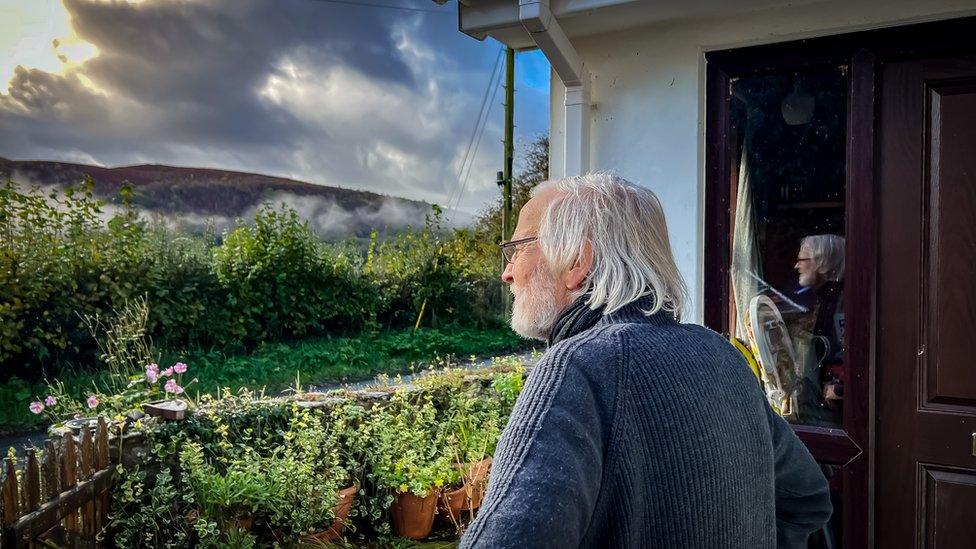
The stone ramparts of Garn Goch loom on the ridge above Dafydd Evans' home in Carmarthenshire
Few people in the village even know about the fort's "large and imposing stone entrance," he added.
In the Garn Goch car park, a group of walkers from Dover said they found the trail on a hiking app but had no idea it was once a cultural and religious centre for pre-Roman Celts.
"I don't know much about it at all. But I'm really interested to find what's up there," said Sam Carmody as the group set off on a trail.
Mr Driver said he hoped to capture people's curiosity about the Celts in his book and that Garn Goch was unusual because, unlike other hillforts, there was no visible evidence of round houses.
His theory is that the Garn, as it is known locally, was instead used to host festivals, a bit like a prehistoric Royal Welsh Agricultural Show or even an eisteddfod.
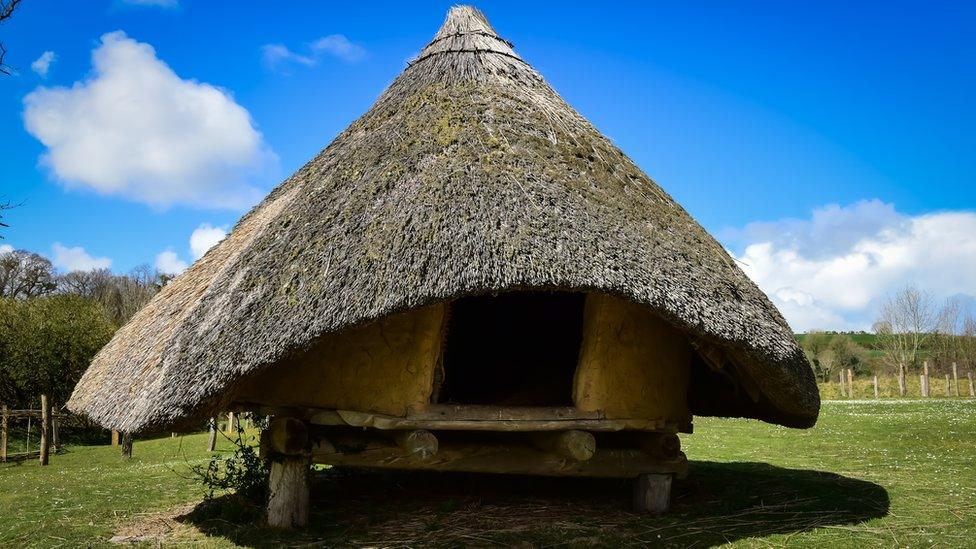
Homes in the hill top villages would have been thatched, like this recreation at Castell Henllys Iron Age village in Crymych, Pembrokeshire
"You need places where you can sell cattle, where you meet your family and kin, come together and feast and celebrate, maybe meet your loved one for the future," he said.
"This performed vital roles 2,500 years ago."
He said there must have been charismatic leaders able to bring "tribes together to provide the labour to build these enormous hilltop enclosures".
"What gets people excited when we bring walking tours around these sites is there's so much to do now," he said.
"The archaeologists can do some of it but I think we need to put a wider call to the public of Wales to re-engage with these incredible historic buildings."
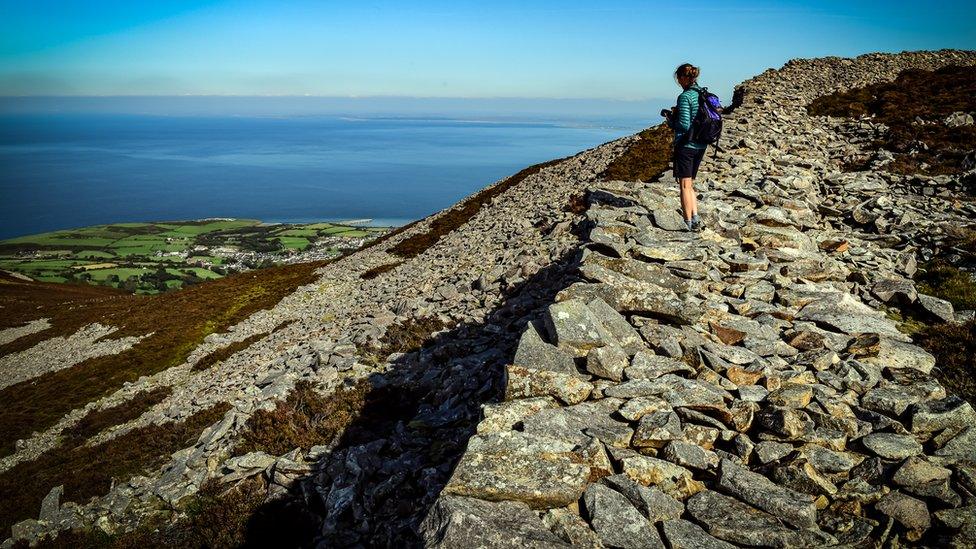
From the Tre'r Ceiri hillfort on the Llŷn Peninsula in Gwynedd, Iron Age people would have had good view of the sea traffic
Mr Driver said a surge of new community projects at hillfort sites in Cardiff, the Clwydian Range and near Aberystwyth in Ceredigion was "waking up hillforts that have long lain unexcavated and telling us incredible new facts about them".
"Nowadays people can have their faces painted blue, learn about the Celts in school," he said.
"But actually we have evidence of a very sophisticated and advanced prehistoric past in Wales and how much of that is getting out to the wider public?
"I think there's still a big story to tell there."

PARANORMAL: Chilling ghost stories and words appearing on the walls...
UNMISSABLE DRAMA: When the Wolf is at the door, be very afraid

Related topics
- Published12 July 2023

- Published13 July 2022
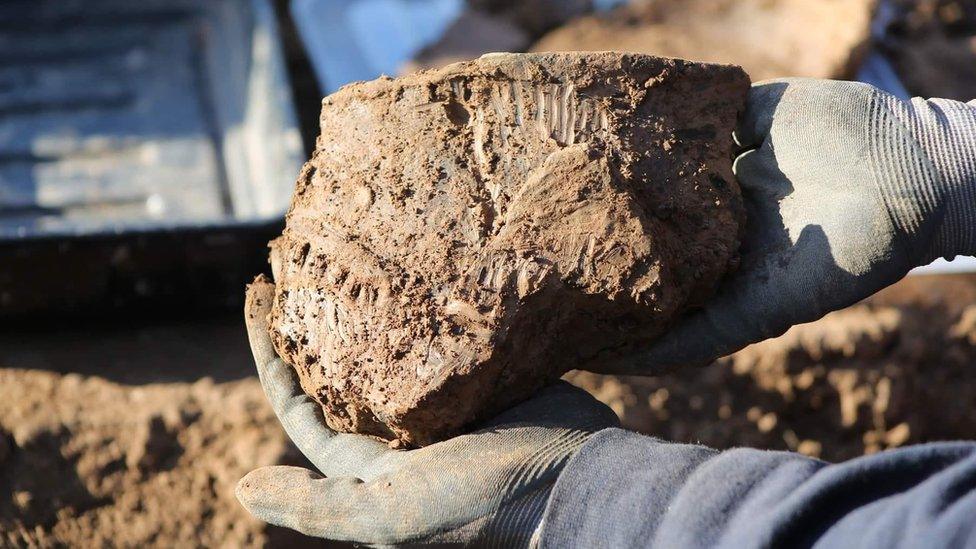
- Published2 October 2021
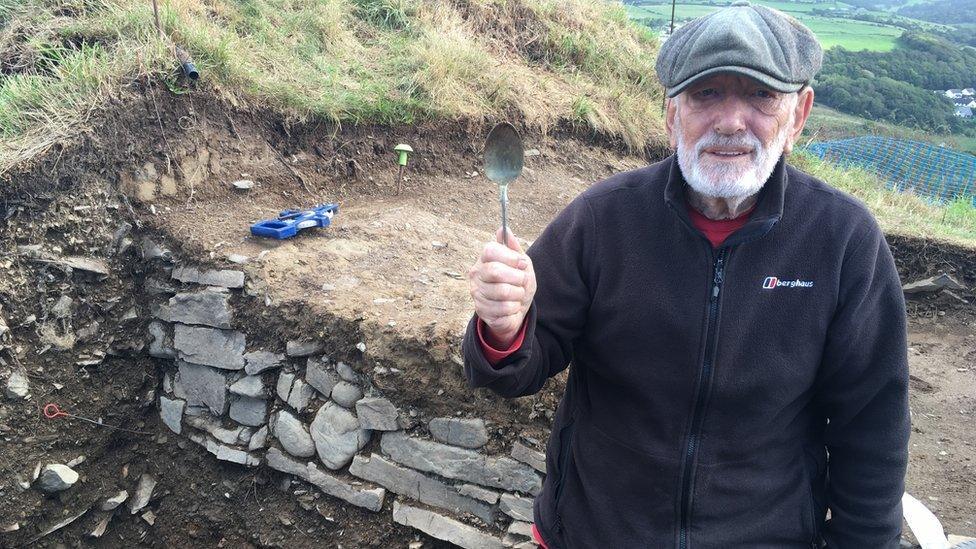
- Published30 June 2020
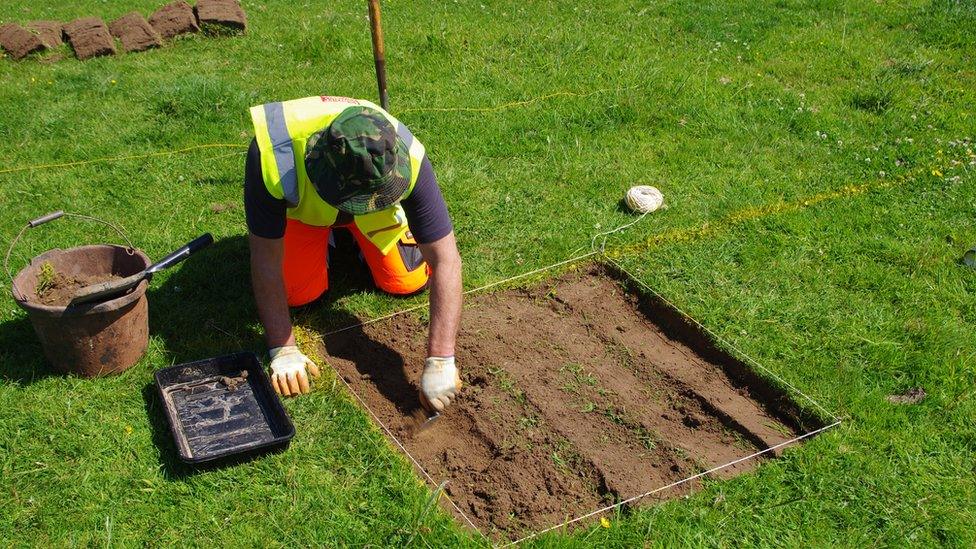
- Published20 August 2019
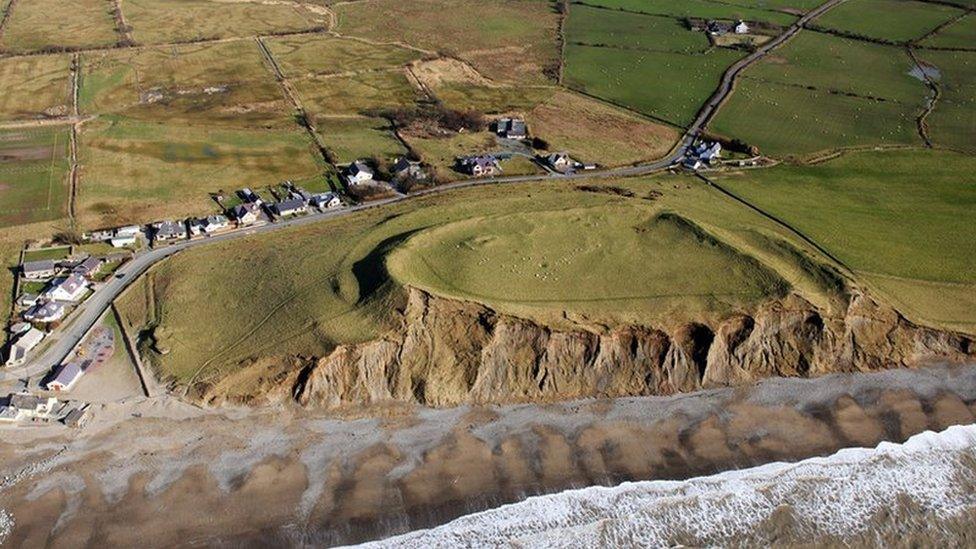
- Published7 July 2018
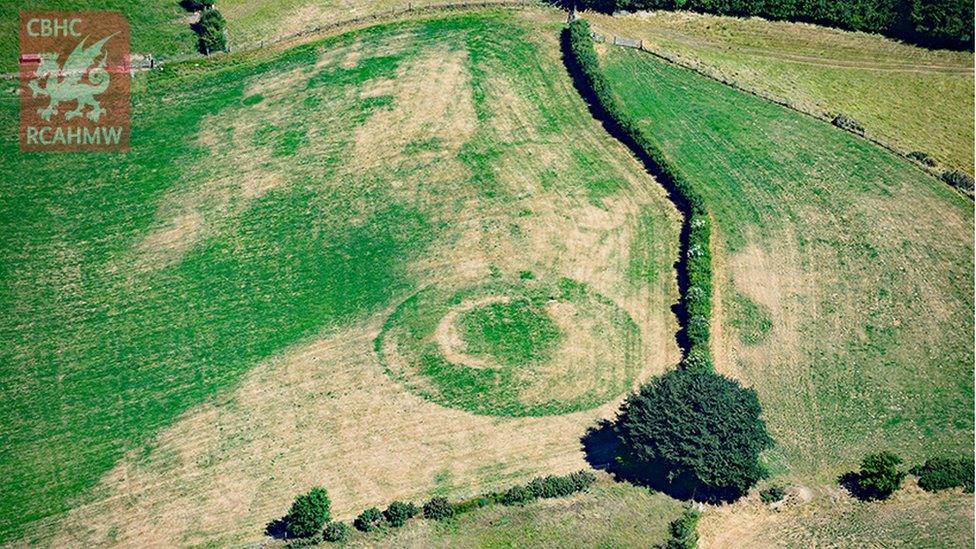
- Published22 June 2017
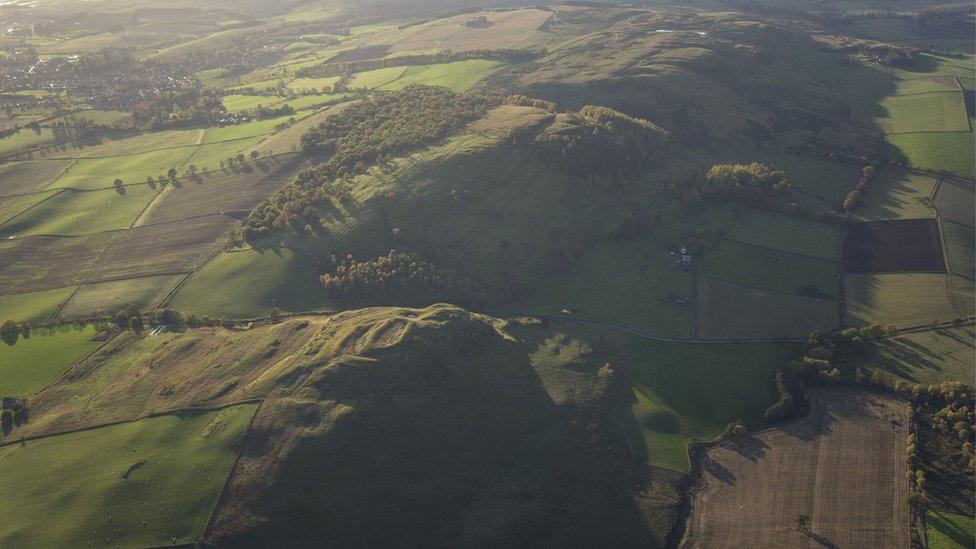
- Published7 September 2017
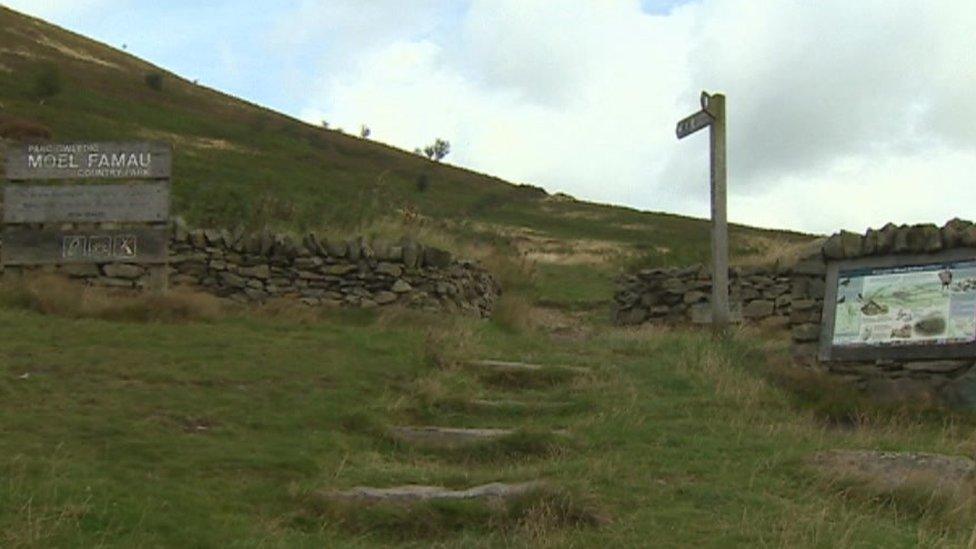
- Published19 July 2013
